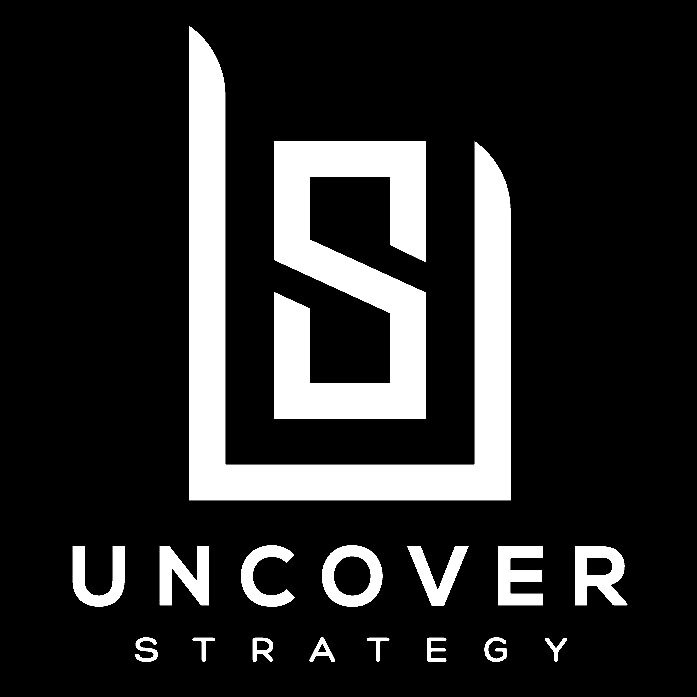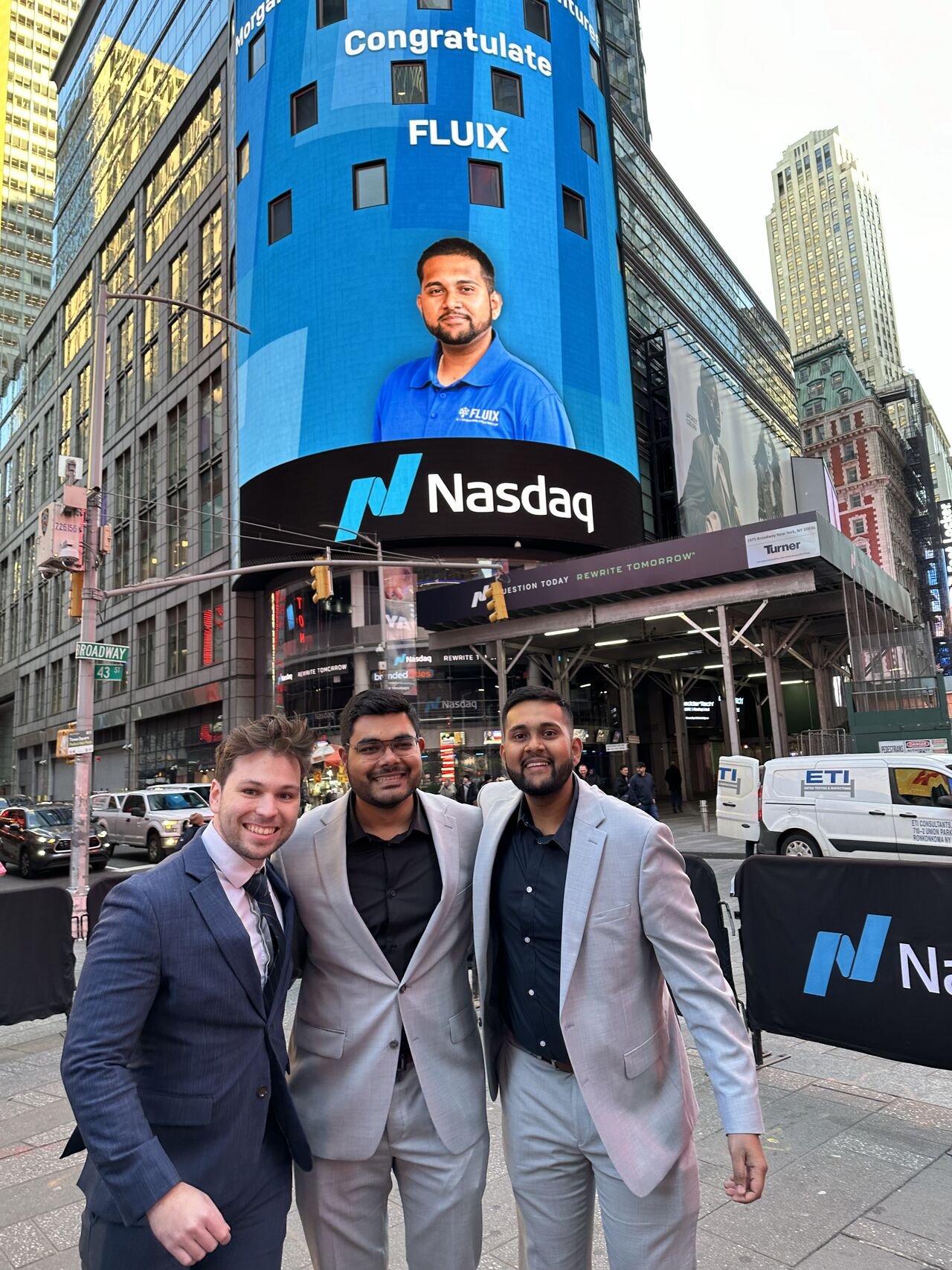Inside Silicon Valley: My Journey Through the World's Fastest Startup Ecosystem
SV.
Let me just say this upfront.
I thought I knew what fast-paced meant. Until now. I’ve worked with startups, pulled all-nighters, fired off 2 am emails, and juggled three jobs (plus my own business) with spotty plane Wi-Fi.
But nothing prepares you for Silicon Valley.
It’s like trying to drink from a firehose… while sprinting… in a suit… and probably on the way to pitch investors.
1. The Silicon Valley Pace: Pitching to 300 People and a 24hr Trip to NYC
One day in, and I’m pitching to 300 people.
It’s not my startup, mind you, but the one I’d just joined, called FLUIX.AI.
FLUIX helps data centers save 40% of energy costs by placing their facilities on AI autopilot. And I just joined their team as a consultant.
My teammate Andrew and I had just scored desks in a coworking space at 9zero, a sustainability and community-focused coworking space, courtesy of our founder Abhi. Then, in the first online meeting came the bombshell.
Andrew and I @ Salesforce Tower in San Fran.
Source: Simon Beuse, San Francisco, 2025
First day at our new coworking space: 9zero.
Source: Simon Beuse, San Francisco, 2025
Our last day at 9zero.
Source: Simon Beuse, San Francisco, 2025
“I’ve done so many pitches,” Abhi Sastri said casually. “There’s an event tomorrow. How about you do it?”
We slowly closed our laptops thinking about how to spell ‘panic’. Andrew unfortunately got sick by lunchtime, so I was left as the last startup soldier standing. I nearly bailed. But with some rapid-fire pitch coaching on the parking lot after lunch (and lots of caffeine), I did it.
Shaky voice, sweaty palms, all of it.
Bit tightened up during the pitch…
… but in a much more relaxed state taking a photo with Abhi Sriram after.
Somewhere in there, we also found time to fly to New York for a 24-hour pit stop at a Morgan Stanley event on Times Square. It was one of those “blink and you’re networking with VCs before coffee” kind of days. At one point, we were literally running for 20 minutes in suits to our next meeting because the subway or a cab would have been too slow.
FLUIX.AI was a participant of the “Morgan Stanley Inclusive & Sustainable Ventures (MSISV)” cohort event a year ago.
Source. Simon Beuse, Morgan Stanley, New York, 2025
Some of the original team members at last years MSISV event.
Source: Abshi Sastri, New York, 2024
To make things even more surreal, right after that, we squeezed in a road trip to Yosemite and, a short while later, another road trip alongside Highway One.
After an exhausting week, we somehow still got ourselves into situations with snowstorms, worrying about the snow chains we bought last minute on Amazon, massive trucks replacing our original car rental (a Wagoneer is basically a small apartment), and 15 people in a Ford Transit (Andrew and I somehow became unofficial tour guides). I never thought that a Ford Transit would fit that many people.
Also, that van may or may not have groaned going uphill.
The resort in Yosemite we stayed in was almost empty. The mountains weren’t.
And downtime? Never heard of her.
2. The Hustle Culture: Speed, Experimentation and Risk-Taking
Startups here don’t mess around. Roles? Forget it. You do everything.
On our first day, we were asked to create an investor overview, and source specialized AC equipment (so-called CRAC units) for a mission-critical setup. Naturally, I called 10 companies, chased a unicorn contractor via a random referral, and found someone who didn’t have what I needed… but knew a guy who knew a guy.
Three hours later we had a working solution, a mini taskforce, and even a guy who’d previously worked as a contractor in that building.
You really can’t make this stuff up.
The very empty office + garage we just got the keys to at FLUIX.AI, just across the road from NVIDIA and Intel.
Source: Simon Beuse, San Jose, 2025
The bigger point? Speed always wins. You fail, you pivot, you move on. We once scrapped an entire data center cooling setup plan, then pivoted to a pop-up tent simulation. All in one 30-minute meeting.
In Germany, we'd still be in the kickoff for a Datenschutz (data privacy) workshop.
3. AI and Startups: Innovation on Fast-Forward
What struck me most? These startups aren’t “adding AI.” They are AI-first. From day one.
When the new OpenAI GPT-based agent “Operator” hit the news, the team had already stress-tested it before lunch. Were they useful yet? Maybe. Did that matter? Not really. It was all about curiosity, speed, and sharing results.
Another time, we walked into the Salesforce Tower (gorgeous views, terrible coffee machines) and ended up chatting with two Korean engineers about machine learning frameworks and their ideas. Five minutes later, we snagged up a meeting room, a whiteboard, and Abhi demoed his understanding of the latest ML algorithm trying to help the team like it was the final pitch on Demo Day.
In Germany, that same conversation might have taken a month. After the appropriate legal reviews. And a PowerPoint.
A quick note on investors here: they’re very into AI — but they’re allergic to “fluff”.
We solve everything with AI” will get you eye rolls. What they want is specificity. “We use transformer models for X because it enables Y.” Anything else feels like you didn’t do your homework.
4. Visiting the Big Guns: NVIDIA, Tesla and $100 Ubers (+Waymo)
We Ubered everywhere. Yes, it’s expensive. But it beat walking across San Francisco’s seven million hills or taking public transport for 3 hours twice. Plus, when you split it by 7, it becomes quite economical.
Another quite economical option (when you split the bill) is when we tried Waymo for the first time. Weird at first. No driver, just silence and sensors. But after the second ride, it somehow felt… safer than a regular Uber or Didi. You can literally see what it sees: every pedestrian, cyclist, car.
At one point, I lifted my foot like I might cross the street (hesitated), and the Waymo already stopped. No human reacts that fast.
Even Waymo saw the clip and commented: “The future is now.” I believe it. Sure, it’s not perfect. But the fact it already works like this, today, in real streets, is a glimpse of what’s coming.
We also visited NVIDIA and Tesla amongst many others, and two things stood out.
First, the vibe: casual but intense. Everyone’s in hoodies but operates like it’s launch day every day. They answered all our questions, shared insights, and somehow made us feel like we belonged. Even if just for an hour.
Second, the density of talent. You can almost feel the ambition in the air. You walk past a meeting room and hear someone casually debating the future of quantum acceleration like it’s no big deal.
Meanwhile, I’m just trying to remember where I parked the Wagoneer.
Just when I thought the day had peaked, Tesla let us take their Cybertrucks for a spin.
No forms, no signatures. They snapped a photo of my license on my phone, and that was it (I could see it was even blurry!).
I have to admit, they’re kind of ridiculously fun. Like a super-heavy metal toolbox on wheels which however does not feel like it when moving around (and flooring the pedal once in a while).
5. The Silicon Valley Mindset: Conversations that Matter
Networking in the Valley is fast, direct, and surprisingly generous. People want to help - if you show you're serious.
Small talk? A little. But then it's straight to “So what are you building?” or “How are you approaching growth?”
There’s an unspoken rule: Pay it forward. Help others now. Maybe they’ll help you later. And even if they don’t? Well, you kept the karma gods happy.
Alex Dantas, founder of Circuit Launch, shared an incredibly insightful story, both personal and professional. Generous with his time, open to questions, and genuinely enthusiastic. Grateful for the wisdom (and offers of help and connections) he shared.
Source: Simon Beuse, Silicon Valley, 2025
6. What Corporates and SMEs Can Actually Learn
Silicon Valley isn’t perfect. But there are real lessons here:
Speed beats polish. You don’t need a 30-page deck to test an idea. Sometimes, a phone call is enough.
AI-first isn’t a buzzword. Try tools. Fail fast. Choose a lane and go deep (start with ONE initiative that delivers the most value). Educate your teams and give them permission to explore. But then support the ones who move fast with real resources. BTW: We do this at Uncover Strategy. You can book a complimentary discovery call if you're interested.
Risk is the new safe. Playing it safe in a fast-moving world is actually the riskiest thing you can do. SMEs and corporates need to lean into calculated risk. Especially the ones sitting on goldmines of data.
7. Final Thoughts: Can Others Catch Up?
At some point during a meeting, I can’t remember which, they all blurred, I had a moment.
This place moves differently. It thinks differently.
Quickly furnishing the office by moving used furniture from a local warehouse into our new office at FLUIX.AI (Sri dubbed it the “Startup Graveyard”).
Source: Simon Beuse, Silicon Valley, 2025
Can Germany or Australia recreate this? Parts of it, yes. With more capital, looser regulatory handcuffs, and a culture that says “try it” more often than “write me a business plan.”
But more than anything, it changed my perspective. I came home tired, a little cold, and with 40 new startup ideas I’ll never have time to build. But I also came home sharper. More open. And with a belief that some of this speed, energy, and ambition can be imported.
You just have to be willing to jump in the van, drive through the snowstorm, and figure it out as you go.
Note: Some of the editing for this content has been assisted by AI technology to enhance efficiency. Rest assured that all information provided remains thoroughly vetted and accurate.


































